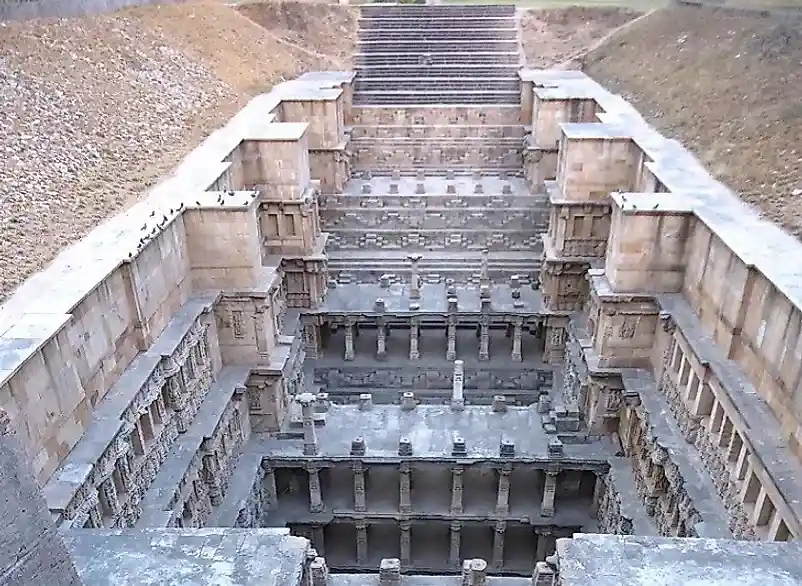Kotada Timba
The 70 hectare town of the Indus valley civilisation was considered the most spectacular of all the other towns that were there in the Harappan civilisation. Regardless of the town being the fifth in line as per the area it covered, the town of Dholavira was the pure definition of a ‘big bomb in a small packet’.

Stone structure of Dholavira ; Source: World Atlas
This ancient city of the Indus Valley civilization is one of the most prominent cities of the civilisations. The one thing that makes Dholavira unique from all the other towns of the civilisation is that it was the only town that set a record of having continuous settlements and buildings for over 1700 years.
This town got its name of Dholavira from the village near it when it was found. The village’s name was also Dholavira as well. The town not only took the inspiration of its name from the nearby village but also noted to be spectacular in city planning. The architecture including the wide roads and the other settlements were made with geometric precisions.
The precision was not just limited to settlements but it also extended to the systems of water conservation and harvestations. The water conservation systems were supported by the two rivers that flowed through the city namely Mansar and Manhar, on which the dams were built.
The same water conservation techniques were helpful in the times when the town experienced good or weak monsoons weather conditions.
Even though there are not many decipherable and datable resources of Dholavira, this town was one of those to have successful settlements. One of the reasons for this was the shifting from mud bricks to stone bricks in order to construct the buildings and other parts of the settlements.
As successful as Dholavira was, the expansion of the city slowed down. It was around the year 2400 BCE that this happened. Dholavira even experienced a cease in the expansion of the city near 2300 BCE. This led to a major decline in the generation of architecture as well as the population and the materials that were used to make the structures.
Soon enough, the people of the small town were unable to maintain the city or keep up with the expansion. The resources started reducing and soon enough went scarce. The same reason led to the water reservoirs to not come to use. Due to this, the town got deserted for centuries. Not long after, the city disappeared.
It was later in the year of 1989 that the site of Dholavira was once again discovered and put up for excavation. The excavation led to the discovery of the town being well fortified with multi-storied buildings and settlements. Not only that but the towns being divided into public baths, markets and other things were also discovered.
It was also believed that Dholavira was the town for all the officials and the important people to reside in out of all the towns of the Indus valley civilization.
Besides these things, the remarkable water sustainability and planning of the city that was found in the excavation was one more of the things that impressed the excavators.
Another thing that caught the eye on the excavations was the building or perhaps the ruins of the buildings was that they were made of stone and not mud bricks.
Even though this town of the Indus Valley civilization was just 70 hectares in area, this town proved out to be as remarkable as any other town of the civilization. One of the most advanced towns with impressive facilities and systems that provided multi-storied buildings and other resources to its wide population kept the people happy and the town as a successful one.

Well facilities in Dholavira ; Source: gujarattourism.com


